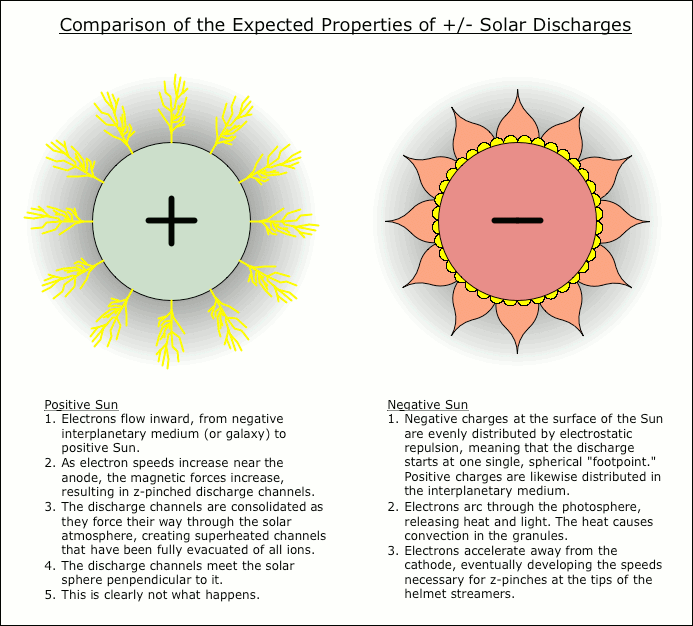Critique of Ralph Juergens' Electric Star Model
© Charles ChandlerThe Electric Star model was inspired by 1, while 2 was the first to say that the Sun was primarily an EM phenomenon, and 3 went on to say that the primary source of energy in the Sun is an electric current between the Sun and the rest of the heliosphere.The evidence that Juergens was on the right track is accumulating, though it appears that he had the polarity backwards. This we can determine simply on the basis of the gross physical characteristics of electrostatic discharges. If the Sun was positively charged, with a stream of electrons flowing inward from the interplanetary medium, nearing the Sun the electron streams would achieve relativistic speeds, and get pinched into discrete discharge channels that would connect with the Sun at distinct footpoints, like lightning. (See the left pane of Figure 1.) This, of course, is not at all what happens. The discharges actually take the form of "helmet streamers" with "footpoints" (if that term is even appropriate) that cover vast amounts of the solar surface. The flow is outward, and the streamers are pinched away from the Sun, becoming discrete filaments at roughly 2 SR. (See the right pane of Figure 1.)Figure 1. Solar discharge models. The density of particles in the corona is shown as a halo around the orb.The nature of the charging mechanism that creates the potential is another issue, which is discussed elsewhere. Regardless, it's clear that the properties of the Sun match those of a negative discharge quite nicely, while the Sun as an anode receiving electrons from the interplanetary medium would have properties that are entirely absent.
References
1. Birkeland, K. (1908): The Norwegian aurora polaris expedition, 1902-1903. H. Aschehoug & Co. ⇧
2. Bruce, C. E. (1944): A New Approach in Astrophysics and Cosmogony. London and Woking: Unwin Brothers Limited ⇧
3. Juergens, R. E. (1979): Electric Discharge as the Source of Solar Radiant Energy (Concluded). ⇧











